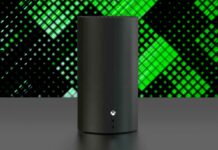AMD has demonstrated a strong commitment to the AM4 socket, and it appears that this commitment will also extend to the current AM5 socket. According to a recent interview with David McAfee from AMD, the latest socket is not going anywhere yet.
The Vice President of AMD’s Client Channel Business confirms intentions to keep AMD’s promises from a few years intact. This means that AM5 will support new Ryzen CPUs in 2025 and beyond.
In addition to supporting future next-generation Zen 5 processors, the AM5 platform currently supports all AMD processors built on the Zen 4 architecture. This includes not just the Ryzen 7000 series but the recently released 3D V-Cache lineup as well.
The upcoming Ryzen 8000G APUs are also expected to be supported on the current AM5 platform. When asked about future support for the AM5 socket, David McAfee said:
“It absolutely still stands.”
He explained that AMD is aware of AM4’s success due to its longevity advantage over rivals like Intel. Therefore, the company is in no rush to move to a new platform since AM5 has just settled in.
He confirmed that the company aims to stay on AM5 as long as possible. Therefore, it might even extend into 2026 since AMD will continue to monitor the duration of this commitment.
As 2025 draws near, AMD is likely to release at least one more family for the AM5 platform before considering whether to extend the platform’s life or move Ryzen CPUs to a whole new home.
This will be a significant choice because Ryzen’s success was largely attributed to the longevity of the AM4 platform. The fact that AMD has yet to alter its plans for AM5 is promising for the future.
We can anticipate that it will be a stable platform for years to come, but how it stacks up against AM4’s performance remains to be seen. That being said, the early adopters of the AM5 platform are still in a much stronger position with their purchase since Intel will be switching to a new platform soon.
Thank you! Please share your positive feedback. 🔋
How could we improve this post? Please Help us. 😔
[News Reporter]
Malik Usman is student of Computer Science focused on using his knowledge to produce detailed and informative articles covering the latest findings from the tech industry. His expertise allows him to cover subjects like processors, graphics cards, and more. In addition to the latest hardware, Malik can be found writing about the gaming industry from time to time. He is fond of games like God of War, and his work has been mentioned on websites like Whatculture, VG247, IGN, and Eurogamer.


 Threads
Threads

